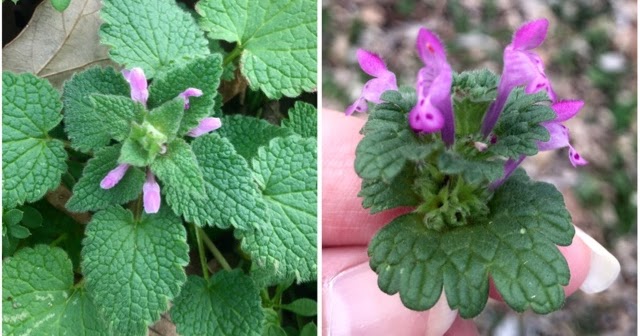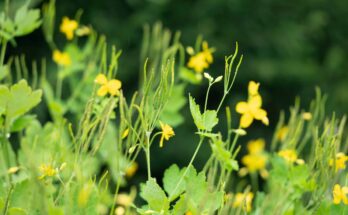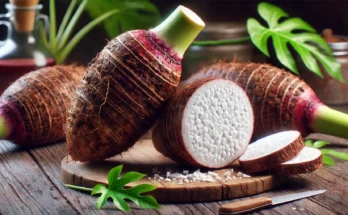Purple Deadnettle (Lamium purpureum) is often overlooked in the wild plant world, dismissed as just another weed. However, this unassuming member of the mint family holds a rich history of practical and medicinal uses. With its striking purple flowers and heart-shaped leaves, Lamium purpureum is not only beautiful but also offers a surprising array of benefits for those who are aware of its potential. Whether you’re a herbalist, forager, or simply someone curious about the plants around you, this article will introduce you to the many hidden gems of Purple Deadnettle.
1. A Botanical Overview: What is Purple Deadnettle?
Purple Deadnettle is a low-growing, herbaceous plant found throughout temperate regions of Europe, North America, and parts of Asia. Despite its name, it’s not a true nettle, as it lacks the stinging hairs that make nettles famous (or infamous!). The plant typically grows to about 12-30 cm in height, with square stems, soft, jagged leaves, and distinctive clusters of small, purple, tubular flowers that bloom from early spring to late summer.
This plant thrives in disturbed soils, commonly seen along roadsides, in gardens, and meadows. It’s a member of the Lamiaceae family, which also includes other well-known herbs like mint, basil, and thyme.
2. Nutritional Profile: A Superfood in Disguise
While often overlooked as a garden weed, Purple Deadnettle is actually quite nutritious. Its leaves and flowers can be consumed raw or cooked and offer a variety of nutrients, making it a valuable addition to any wild food foraging list.
- Vitamins and Minerals: Purple Deadnettle is a rich source of vitamin C, which boosts the immune system and promotes skin health. It also contains vitamin A, calcium, iron, and magnesium—minerals essential for bone health, muscle function, and energy production.
- Antioxidants: Like many wild greens, it is high in antioxidants, particularly flavonoids, which help fight oxidative stress and inflammation in the body.
- Fiber: The plant’s leaves contain fiber, which aids in digestion and helps maintain a healthy gut.
For those interested in wildcrafting or adding variety to their diet, incorporating Purple Deadnettle into salads, soups, or as a garnish can be a way to tap into its hidden nutritional benefits.
3. Medicinal Uses of Purple Deadnettle
Purple Deadnettle has a long history of use in traditional medicine, particularly in European folk medicine. The plant contains several compounds that can support health in different ways, including anti-inflammatory, antimicrobial, and analgesic effects.
Anti-inflammatory and Pain Relief
The leaves of Purple Deadnettle have mild anti-inflammatory properties, making them helpful for alleviating symptoms of arthritis and other inflammatory conditions. A poultice made from crushed leaves can be applied topically to relieve pain and swelling associated with minor injuries, sprains, or bruises.
Respiratory Health
Traditionally, Purple Deadnettle was used to support respiratory health, particularly for conditions like asthma and bronchitis. An herbal infusion or tea made from the leaves can help soothe the throat and relieve congestion, making it useful in alleviating cold symptoms or a cough.
Digestive Aid
The plant has mild astringent properties that make it beneficial for treating mild gastrointestinal issues, such as diarrhea or upset stomach. It can also promote healthy digestion and reduce bloating when consumed in small quantities.
Skin Care
Purple Deadnettle can be applied topically for skin conditions like eczema, minor cuts, and rashes. It is thought to have soothing and anti-inflammatory effects that can promote faster healing and reduce irritation.
4. Practical Uses Beyond Medicine
Beyond its medicinal properties, Purple Deadnettle also has a variety of practical uses that make it a versatile plant to have around.
Natural Dye
The vibrant purple flowers of Purple Deadnettle can be used as a natural dye. The color produced is often a rich lavender or purple, depending on the method and mordants used. For those interested in eco-friendly crafting or textiles, this plant can be a sustainable option for dyeing fabrics, wool, or yarn.
Companion Plant in Gardens
Purple Deadnettle is often seen as a “companion plant” in gardens because it attracts pollinators like bees, which helps increase the yield of nearby fruit and vegetable crops. The plant can also help suppress soil erosion and may act as a natural mulch, conserving moisture in the soil.
Soil Health
Purple Deadnettle is sometimes used in permaculture practices for soil improvement. Its roots can help break up compacted soil, and it adds organic matter when left to decompose. It also serves as a natural ground cover, preventing weeds from taking over garden beds.
5. How to Harvest and Prepare Purple Deadnettle
If you’re interested in harvesting Purple Deadnettle for culinary or medicinal purposes, it’s essential to do so carefully to preserve the plant and avoid over-harvesting.
- Harvesting: The leaves and flowers of Purple Deadnettle can be harvested throughout the growing season. For culinary use, pick the young leaves and flowers before they become too tough. For medicinal preparations, gather the leaves and flowers when the plant is in full bloom in spring or early summer.
- Preparation: Purple Deadnettle can be used fresh in salads, sandwiches, or smoothies, or dried for later use in teas and infusions. To make a medicinal tea, simply steep the leaves in hot water for 5-10 minutes. For topical applications, you can crush fresh leaves and apply them directly to the affected area as a poultice.
6. Cautions and Considerations
While Purple Deadnettle is generally considered safe for most people, there are a few precautions to keep in mind:
- Allergic Reactions: As with any wild plant, it’s possible to have an allergic reaction, especially if you are sensitive to other plants in the mint family. Always do a patch test before using it topically.
- Pregnancy and Nursing: If you are pregnant or nursing, it’s a good idea to consult a healthcare professional before using Purple Deadnettle medicinally.
- Foraging Ethics: When foraging for Purple Deadnettle or any wild plant, always be mindful of the environment. Avoid over-harvesting and make sure you’re collecting from areas that are free from pesticides and pollutants.
7. Conclusion: The Underrated Jewel of Nature
Purple Deadnettle may be a humble, often-forgotten plant, but it is undoubtedly a treasure trove of health benefits and practical uses. From its impressive nutritional profile to its potential medicinal properties, this plant offers a wide range of advantages for those willing to give it the attention it deserves. Whether you’re looking to boost your immune system, ease inflammation, or simply add a little color to your garden, Purple Deadnettle (Lamium purpureum) is a true hidden gem of the plant world. So, next time you come across this vibrant little flower, take a moment to appreciate its potential—it’s more than just a weed!



